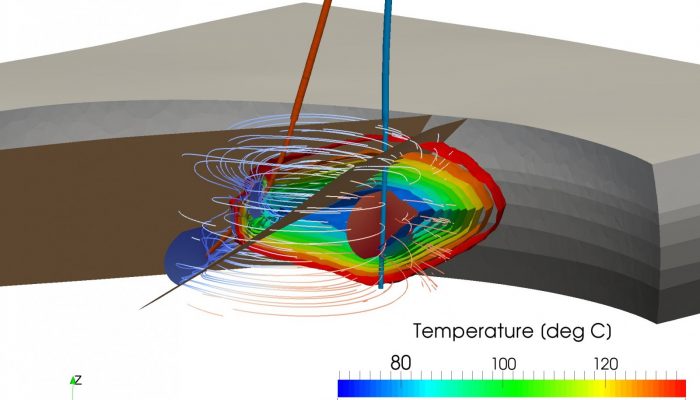Producing deep geothermal energy involves using a well, which can be several kilometres deep, to extract hot water in the aim of using its heat to generate electricity or for industrial applications.
The well is drilled into what’s called a geothermal reservoir; rock containing empty space, or porosity, which allows the passage or storage of fluids. Sometimes hot water is already sufficiently present within the geothermal reservoir, but often cooler water is pumped into the ground via an injection well in the aim of collecting it once it has been heated. The combined use of an injection and a production well is called a doublet and is a common method of exploiting geothermal energy.
During the production or it is important to understand what is happening to this water as it is being injected, how much we can expect to get out at the other end and how hot it will be! This involves modelling the movement of the water, the transfer of heat and the mechanical stress and deformation of the rock, all of which are interconnected by coupled, highly non-linear equations.
During the production or it is important to understand what is happening to this water as it is being injected, how much we can expect to get out at the other end and how hot it will be! This involves modelling the movement of the water, the transfer of heat and the mechanical stress and deformation of the rock, all of which are interconnected by coupled, highly non-linear equations.
